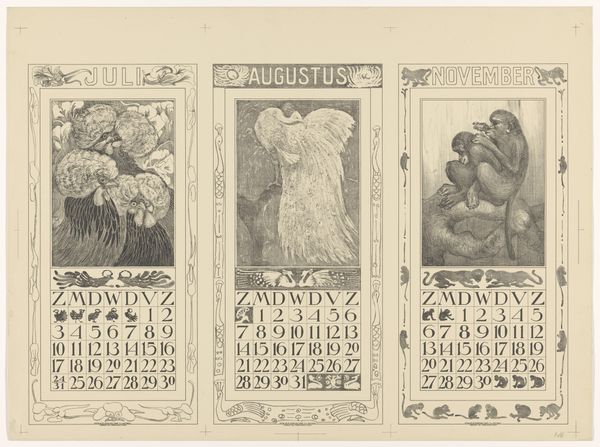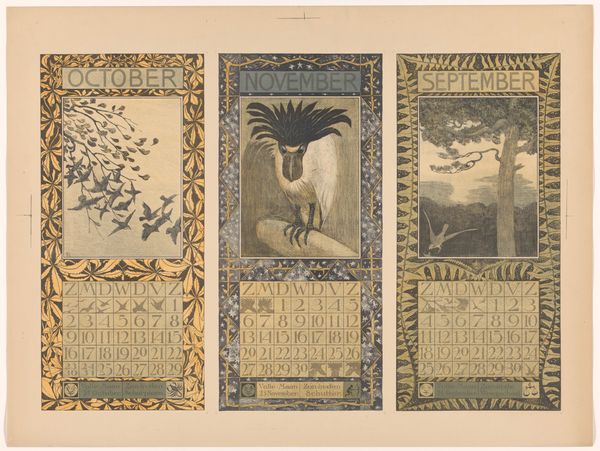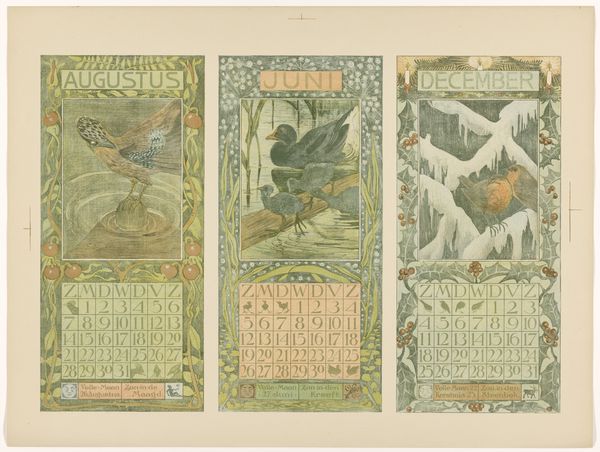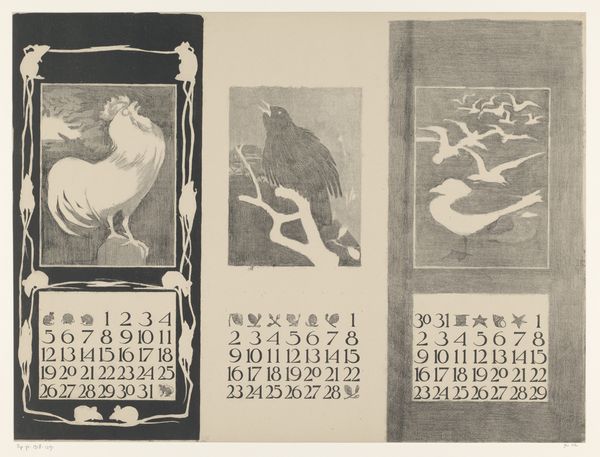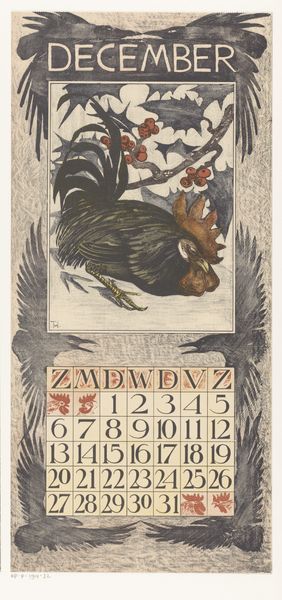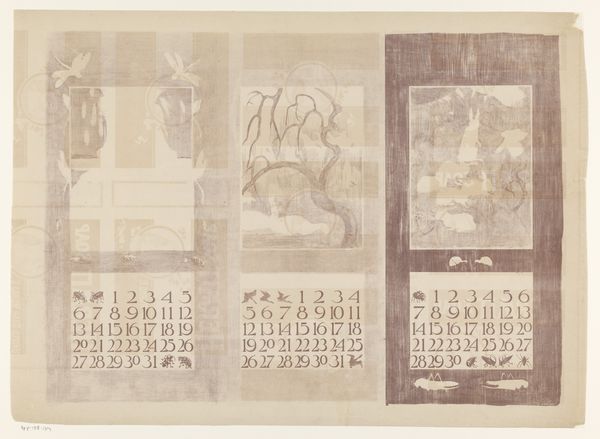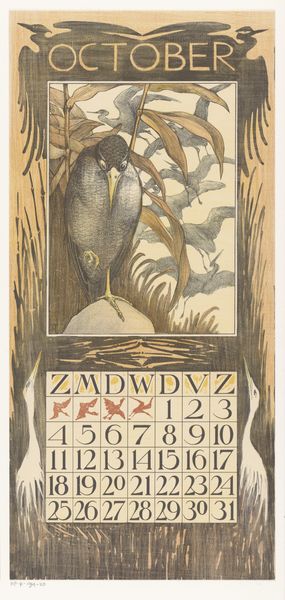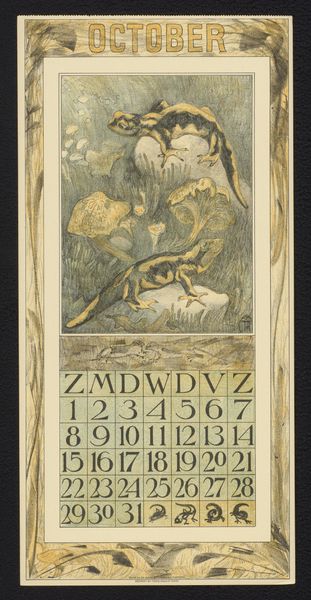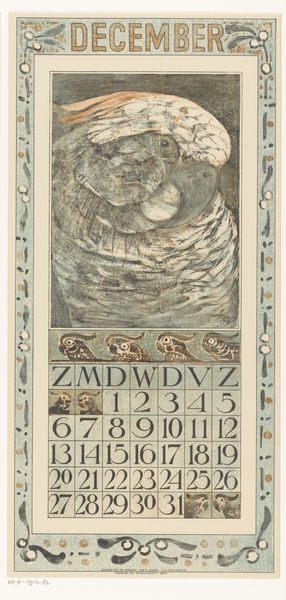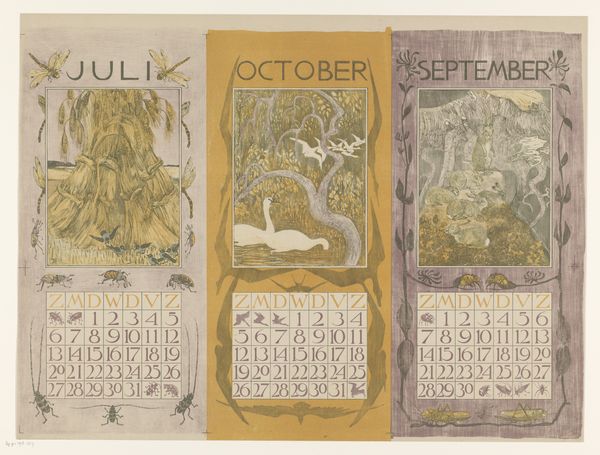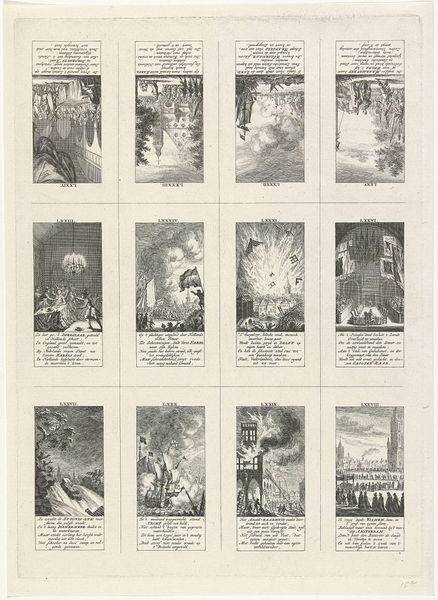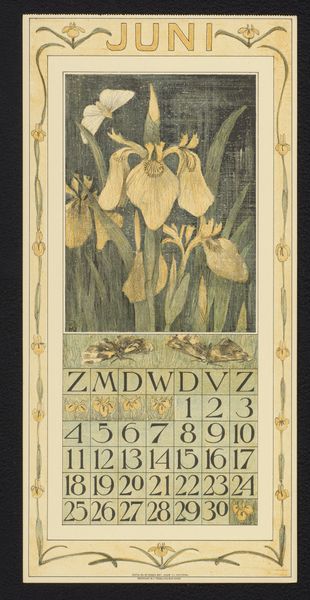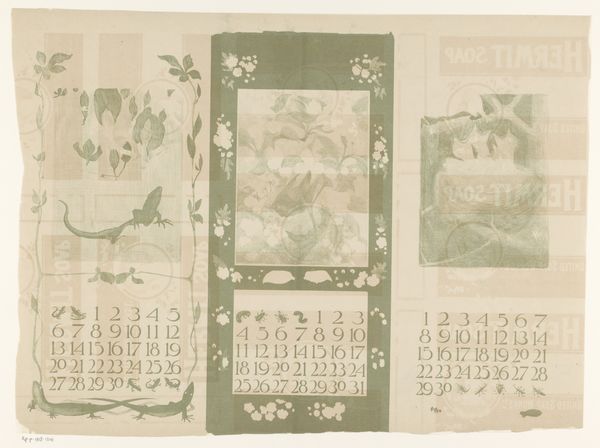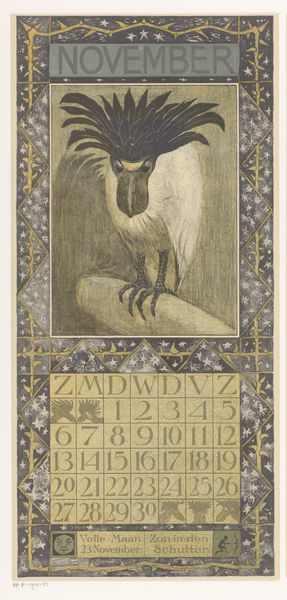
drawing, print, watercolor
#
drawing
#
art-nouveau
#
water colours
#
ink paper printed
# print
#
landscape
#
watercolor
#
watercolour illustration
#
watercolor
#
historical font
Dimensions: height 544 mm, width 716 mm
Copyright: Rijks Museum: Open Domain
Editor: Here we have Theo van Hoytema’s "Kalenders voor oktober, september en december 1903," created in 1903. It combines drawing and printmaking, and I’m struck by the blend of art nouveau aesthetics with what looks like mass-produced calendar functionality. What strikes you about it? Curator: It's intriguing to see how van Hoytema engages with the emerging culture of mass production. This piece prompts us to think about the social and economic forces shaping art at the turn of the century. The blending of hand-drawn elements with printed calendars raises questions about the status of art in a rapidly industrializing world. Do you see any tension between the artistic elements and the functional calendar component? Editor: Definitely. The beautiful illustrations of birds and foliage are fighting for space with the rigidly formatted calendar grids. Was he making a comment about the commercialization of art, perhaps? Curator: It’s plausible. Consider the materials themselves: ink, paper, printmaking techniques. These choices suggest a desire to make art accessible and reproducible, pushing against the elitism of traditional fine art. How does this compare with what was considered 'high art' at the time? Editor: Well, painting or sculpture were more valued. Printmaking was seen as… less artistic? Maybe more aligned with craft or even industry. Curator: Exactly. And this calendar challenges that hierarchy. It’s an object meant for daily use, not just for aesthetic contemplation. By elevating the design of something so utilitarian, van Hoytema blurs those conventional boundaries. What do you think the symbolism of the birds contribute? Editor: The birds… perhaps a nostalgic yearning for nature amidst growing urbanization? The rooster especially in December suggests that time progresses no matter the chaos. Curator: Perhaps. I think what is interesting is that it underscores how art objects embed themselves within a broader network of production, distribution, and daily life, becoming part of our material environment. I hadn't thought about this until now! Editor: Absolutely. I’ll be looking at the process of art production very differently moving forward!
Comments
No comments
Be the first to comment and join the conversation on the ultimate creative platform.
